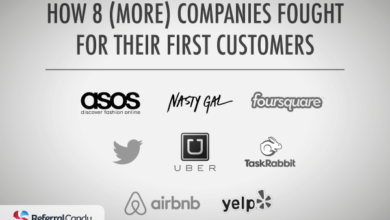The Profitable Zara Marketing Strategy: Spending Zero Dollars to Make Billions
In the fiercely competitive world of retail, where businesses are constantly vying for customer attention through aggressive advertising and price slashing, Zara stands out as a success story. With over 6,500 stores worldwide and a growing online presence, Zara has managed to thrive without following the traditional marketing playbook. So, what are the secrets behind Zara’s financial success and popularity? Let’s delve into the brand’s unique strategies.
1. Be Fast, Not First – Zara’s a Fashion Copycat
Instead of striving to be the first to market with innovative designs, Zara adopts a fast fashion approach. The brand capitalizes on existing fashion trends and quickly churns out affordable versions of high-end styles. By focusing on speed and efficiency, Zara can get new designs from runway to store shelves within two weeks. This strategy has paid off, with the brand experiencing a significant 50% growth in sales over five years, reaching $17.5 billion.
2. It Monitors And Responds To Customers’ Feedback
Zara takes customer feedback seriously and uses it as a valuable tool for product development. Feedback from customers is relayed to in-house designers, who incorporate suggestions into future collections. Additionally, Zara’s store managers are not just sales associates but fashion experts who actively observe customer preferences and behaviors. By involving customers in the design process, Zara has built a strong sense of brand loyalty.
3. It Uses an Anti-Marketing Approach
Unlike many retailers that allocate a significant portion of their revenue to marketing and advertising, Zara spends only 0.3% of its sales on promotional activities. The brand’s minimal marketing approach creates a sense of exclusivity, as customers feel like they are part of a select group by shopping at Zara. By maintaining a low profile in the advertising realm, Zara enhances its appeal and cultivates a unique brand image.
4. Location is the Most Important
Rather than splurging on advertising, Zara invests in strategic store locations to attract customers. The brand strategically places its stores in high-street retail areas in major cities, often near upscale fashion retailers. This positioning gives Zara a touch of high-fashion allure while offering affordable prices. While Zara continues to expand its physical presence, it is also focusing on growing its online sales to adapt to changing consumer preferences.
In conclusion, Zara’s success highlights the power of unconventional strategies in the retail industry. By prioritizing speed, customer feedback, brand experience, and strategic location choices, Zara has carved out a unique niche in the market. The brand’s ability to thrive without heavy advertising spending serves as a testament to the importance of innovation and customer-centric approaches in business.
FAQs
1. How does Zara differentiate itself from competitors in the retail industry?
Zara sets itself apart by focusing on fast fashion, customer feedback, minimal marketing, and strategic store locations.
2. What is Zara’s approach to product development based on customer feedback?
Zara actively listens to customer opinions and incorporates feedback into its design process to create products that resonate with its target audience.
3. How does Zara maintain a sense of exclusivity without extensive advertising?
By limiting its marketing efforts and choosing strategic store locations, Zara creates a sense of exclusivity and uniqueness for its customers.
4. Why is speed crucial for Zara’s success in the fashion industry?
Zara’s fast fashion approach allows the brand to quickly adapt to trends and deliver new designs to customers, keeping them engaged and coming back for more.
5. What are Zara’s future plans for expansion and growth?
While continuing to expand its physical stores, Zara is also focusing on increasing its online sales to meet the evolving needs of consumers in the digital age.




